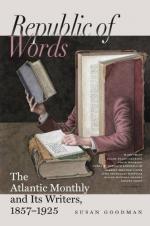In the fourteenth century music was an almost universal accomplishment, and we learn from Chaucer, in whose poetry much can be learned of the music of his time, that country-squires could sing and play the lute, and even “songes make and well indite.” From the same source it appears that then, as now, one of the favorite accomplishments of a young lady was to sing well, and that her prospects for marriage were in proportion to her proficiency in this art. In those days the bass-viol (viol-de-gamba) was a popular instrument, and was played upon by ladies,—a practice which in these modern times would be considered a violation of female propriety, and even then some thought it “an unmannerly instrument for a woman.” In Elizabeth’s time vocal music was held in the highest estimation, and to sing well was a necessary accomplishment for ladies and gentlemen. A writer of 1602 says to the ladies, “It shall be your first and finest praise to sing the note of every new fashion at first sight.” That some of the fair sex may have carried their musical practice too far, like many who have lived since then, is perhaps indicated in some verses of that date which run in the following strain:—
“This is all that
women do:
Sit and answer them
that woo;
Deck themselves in new
attire,
To entangle fresh desire;
After dinner sing and
play,
Or, dancing, pass the
time away.”
To many readers one of the most interesting features of Chappell’s work will be the presentation of the original airs to which were sung the ballads familiar to us from childhood, learned from our English and Scotch ancestors, or later in life from Percy’s “Reliques” and other sources; and the musician will detect, in even the earliest compositions, a character and substance, a beauty of cadence and rhythmic ideality, which render in comparison much of our modern song-music tamer, if possible, than it now seems. Here are found the original airs of “Agincourt,” “All in the Downs,” “Barbara Allen,” “The Barley-Mow,” “Cease, rude Boreas,” “Derry Down,” “Frog he would a-wooing go,” “One Friday morn when we set sail,” “Chanson Roland,” “Chevy Chace,” and scores of others which have rung in our ears from nursery-days.
The ballad-mongers took a wide range in their writings, and almost every subject seems to have called for their rhymes. There is a curious little song, dating back to 1601, entitled “O mother, a Hoop,” in which the value of hoop-skirts is set forth by a fair damsel in terms that would delight a modern belle. It commences thus:—
“What a fine thing
have I seen to-day!
O
mother, a Hoop!
I must have one;
you cannot say Nay;
O
mother, a Hoop!”
Another stanza shows the practical usefulness of the hoop:—
“Pray, hear me,
dear mother, what I have been taught:
Nine men and nine
women o’erset in a boat;
The men were all
drowned, but the women did float,
And by help of
their hoops they all safely got out.”




